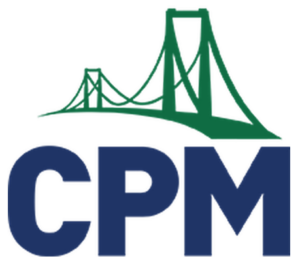Amanda Ethridge, Brooklyn, NY trc-amandaethridge@cpm.org
Amanda is a Teacher Reseacher for CPM’s Teacher Research Corps.
At the start of the year, my school changed part of its mission from “empower all students“ to “help all students maximize their power and potential.” While this may seem like semantics and an inconsequential change in language, this shift from empower to maximizing their power has stuck with me. “Empower” means that we, the staff, are giving students the authority to do something, whereas our current mission recognizes students have had power all along and we are supporting them in recognizing, strengthening, and exercising it themselves. Power is not something you give to students — it is something they have had all along.
What does this look like in a classroom and how do we even start? Close your eyes. Imagine what your dream classroom would look like. What are the students doing? How are they interacting with each other and with you? What are you doing? Who is doing the talking, the thinking, and the work? Now open them. How does what you envisioned match with how your classroom currently operates? How does your classroom reflect your beliefs about power, student learning, and your role as an educator?
Just like students, we all start at different points and learn at different paces. Consider the questions and ideas below alongside where you are in your teaching practice — some of your goals may already be in progress, some may be long-term goals to work towards, and some may seem (or be) insurmountable in your current environment. Let them inspire you to think about a manageable next step. Because, just like students, we are always learning and growing one day at a time.
Consider the Space
Is your desk the focal point of the room? Do you find yourself sitting at it often, creating a physical and psychological barrier between you and the students? There is a growing number of teachers (myself included) who have given up their desks for this reason and in doing so, find themselves having more interactions with students as they move and sit amongst them more. Are students able to move freely through the space or are there “no-go” zones? What does this say about the inherent trust (or lack thereof) we have in our students? Can students retrieve materials (extra paper, pencils, necessary manipulatives, their work) on their own, or do they have to ask for it? As we increase access to things, students need when they need them, we decrease their reliance on us and break down one of the most common power structures in a classroom — that this space is mine and you are merely a student in it.
Peter Liljedahl, author of Building Thinking Classrooms in Mathematics, encourages teachers to “defront” the classroom as another way to level the field between student and teacher. This is the opposite of the “sage on the stage” mentality because learning now takes place throughout and all around the room. Those spaces in your room that do not have great sight lines of the main whiteboard are less of an issue now as students are still able to engage in the work and those spaces of the room that are underutilized now have new potential. Utilizing wall space is one way to defront the classroom as students are able to easily reference anchor charts, word walls, and worked examples when they have a question, strengthening their capacity to problem solve and learn independently.
Consider Student Interactions
Who do students interact with in the classroom? Do they rely on their peers when they are stuck or immediately turn to you? The more we can encourage students to talk with and depend on one another, the more we break the notion that teachers are the only source of information in the classroom and level the power dynamic between teachers and students. Teamwork is an excellent way for students to build these relationships with each other and with themselves. Having clearly defined roles in teams like Facilitator, Recorder/Reporter, and Resource Manager support students in taking on different levels of responsibility in a safe and supportive way, and encourage them to maximize their power and impact their beliefs about leadership and power dynamics.
Liljedahl found that a teacher will answer between 200 and 400 questions in a typical day with almost 90% of them being questions along the lines of “Is this right?” This stops student learning and reinforces the belief that only the teacher knows the process and has the right answer. As you are circulating, take note of who is understanding the concepts and redirect students with those types of questions to them. Strategies and routines like Ambassador, Pairs Check, and Stronger and Clearer, where students are explaining a topic to another and are encouraged to ask clarifying questions, all support the goal of elevating students as holders of knowledge.
Consider Grading Practices
Is student work recognized in a way that celebrates their achievements and highlights the benefits of perseverance? Do our grading practices and our gradebooks reflect what we say about the importance of mistakes and how they are a learning opportunity or do they unintentionally penalize students and impact them more than a performance task?
Two popular phrases adorn many classroom walls: “Mistakes are proof that you are learning” and “Mistakes are expected, respected, inspected, and corrected.” However, the way we traditionally grade students runs counter to this idea. Joe Feldman writes in Grading For Equity “ [s]tudents’ mistakes are penalized during the very stage of learning when students should be making mistakes. If mistakes on any work — homework assignments, a test, quizzes, in-class worksheets, discussions — are always penalized with a score that is incorporated into a grade no matter whether those mistakes occur at the beginning, middle, or end of learning, then the message is that mistakes aren’t ever acceptable, much less desired, and they certainly aren’t ever valuable. Students will be discouraged, not encouraged, to take risks and be vulnerable.”
We recognize that mistakes are part of learning, “But this mechanism only works if students trust the teacher enough to reveal mistakes.” (Feldman, 2018, p. 30) This trust, or lack of trust, is built each time a teacher responds to a student’s mistakes, whether positively with care and understanding, or negatively with indifference or judgment.
Implementing opportunities for students to work together at all stages of learning is an excellent way to reduce students’ reliance on you, build their confidence, and build their trust in their peers. Turn and Talks, team quizzes, and peer feedback all work towards the goal of equalizing status in the classroom and positions students as sources of knowledge and experts themselves. Regularly using these routines allows students to feel more comfortable with asking questions to their peers as they are learning, and gives them the opportunity to answer them as well.
How and how often are you giving feedback to students? Does the feedback you provide respect the work that has been done and provide actionable next steps for improvement? Do students have the opportunity to give you feedback? This can be an excellent way to model giving and receiving feedback before attempting it with their peers. Feedback can take many forms — written and spoken, verbal and nonverbal, informal and formal. Building this culture of ongoing feedback simultaneously builds communication and trust. Descriptive feedback helps students identify next steps for learning and continues the learning process. It enables students to make their own choices about what to focus on and puts the onus of improvement back on them.
These ideas are only a small piece of the many different ways we can support students in recognizing and maximizing their power. These suggestions are not a one-size-fits-all remedy and certainly not the only thing you can do to meet this goal. Some of these practices will take time to implement in a meaningful and impactful way and you will find yourself tweaking them until you find something that works for you and your students — rarely is someone proficient at something the first time they try it. Just like you tell your students that learning is a process and takes time, remember to tell yourself too. Letting go of the power we traditionally hold can be incredibly difficult because as we attempt to do so it can seem like we are losing control over our classroom. Remember that what you are really doing is helping students recognize and use their own power.

